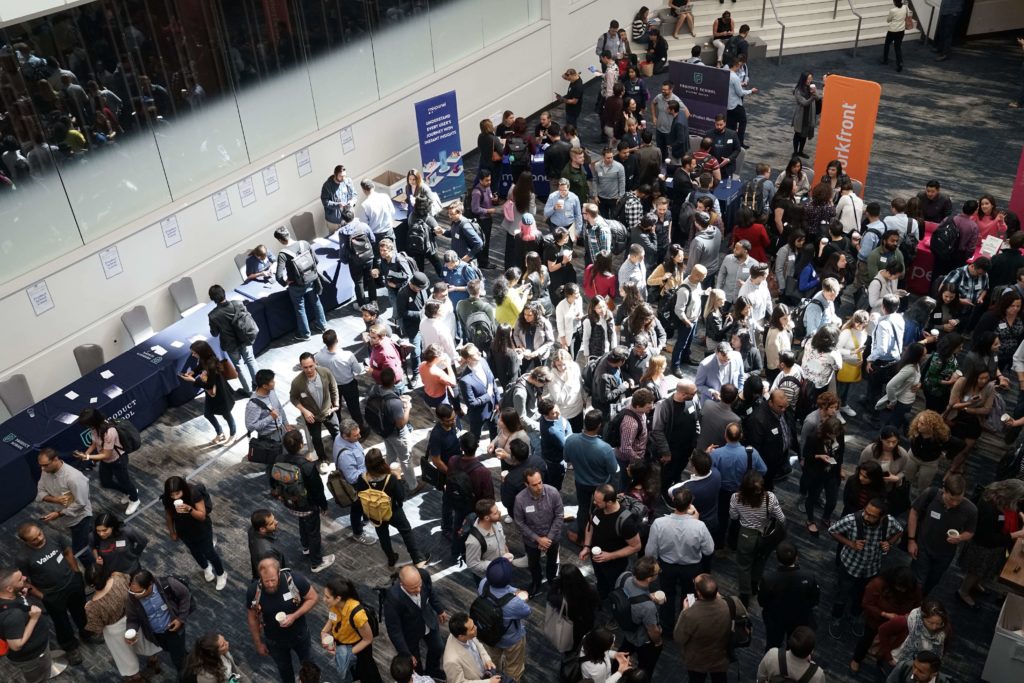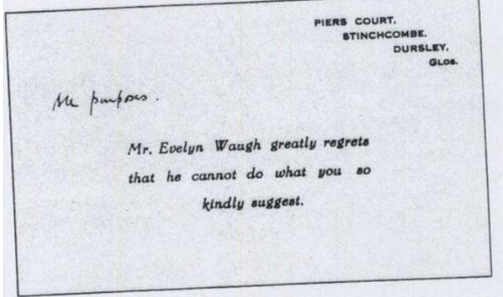
Satya Upadhyaya is a Marketing Technologist.
He’s also a fan of using driving analogies to explain data and technological ways in an accessible manner. Come with me on a learning journey through the highways and by-ways of Marketing Technology, the importance of a learning-orientation and the future of learning.
Cindy Tonkin: (00:25) Ladies and gentlemen, today in my podcast I have a gentleman who is very much first in customer relationship management CRM and he wants to change the world of how marketing and sales work.

Satya’s Path
Satya, tell me, how did you get into analytics? What’s your path?
Satya Upadhyaya: (00:53) I got into analytics not by accident, but by choice. I worked for a bank and I’m happy to say, I had a great mentor. We looked at all the aspects of data and customer. How data is collected, how data is stored, and how that is consumed mostly for analytics and marketing communication. So that’s how my journey started off.
Cindy Tonkin: (01:20) It’s been like 20 years,
Satya Upadhyaya: (01:22) About 16, 17 years, roughly around that, but the good thing for me is that I started in a sales role, so pretty much attached to a customer. Today we are talking about the customers as the focal point of every interaction. I had that degree in heritage of being in that space. I worked in a call centre, so very, very closely associated with that, and you really understand and interpret that.
When you look at CRM and the three components, where do you start? Some people would start from the strategy, some would start from analytics, and some would start from operations. I’ve actually done my rounds of all the three. I’ve done the slicing and dicing of data and then looking at segment one and upgrading those segment based approaches. I’ve looked at integrating different platforms together, so that’s the operational piece you could say. And then the strategy in terms of the top down approach of how you would look at the customer from the top, and look at data systems capability, and bring it all together.

The Marketing Technologist
At that time, all this was evolving. The future of marketing, I will say, was evolving at the same time. Then data and analytics, machine learning, and artificial intelligence was also getting coined up. In parallel there was another term that was getting coined, which is called the marketing technologist. Now I am one of those marketing technologists.
Cindy Tonkin: (02:45) Is there a job description on LinkedIn?
Satya Upadhyaya: (02:48) Well, that’s where I’m trying to educate people. There needs to be a job description and what elements actually fit in. So firstly, where does the role actually fit? Technology, marketing, marketing’s all about behaviour.
Cindy Tonkin: (03:04) There is not a single data person that tells me that we should be under IT. They’re all like, “NO, we’re not IT!”
Satya Upadhyaya: (03:09) Well, ironically, I’ve actually sat in IT for a while. So I’ve had that experience and I’m in a good position to talk about the operating model for a CIO and how it is different from a CMO. Do they need to cross collaborate? That’s why this marking technologist’s role becomes very, very pertinent because the fact that it’s one leg in the CIO camp and the one leg in the CMO camp.
Now this is important, as in the last two years we’ve seen that a lot of the technology budget for marketing is now owned by the CMO, not by the CIO. The CIO becomes a custodian of these marketing systems and the owner is the CMO. So this role gradually from IT has started to shift in the marketing side, and is sitting as one of the direct reports for the CMO. I haven’t seen a lot of organisations yet who have embraced this role. Because what’s the job description? What type of skill sets you’re looking at?

Skills to a “T”
If someone’s a CMO and is looking for a marketing technologist and the talking about the skill sets they need, it’s like a T. So you’ve got one vertical where someone’s got deep experience in. That could be data and analytics, that could be campaign management, campaign orchestration digital. Then they need to know the other facets as well. So that’s the horizontal bar of the T. Now I say that because, with my behavioural marketers, they’ve been above the line marketing. They understand customers’ journeys absolutely well.
Where they need significant help, and where the struggle is, is in how you stitch customer journeys across platforms in different systems and make a seamless experience. Everyone’s talking about customer experience being seamless, continuous, exponential, it’s all good talk. But when you put that into a production and application, its how the data is getting ingested, how data is getting transferred, and then pushed across where you’re marketing communication to your end customer, that’s where the help is needed. Maximum help is needed for the behaviour of marketers.
Cindy Tonkin (05:38) So you want to change the world. Just one job description at a time.
Satya Upadhyaya: (05:38) The way I would change the world is, that people understand what the future of marketing is all about. In one line, it always has been about the customer. The customer will always be the focal point. It was the focal point yesterday and it will be the focal point tomorrow.
the future of marketing… always has been about the customer. It was the focal point yesterday and it will be the focal point tomorrow.

Changing Customer Interactions
However, what’s changing is that this interaction with this customer is going to be technology led. It’s going to be insights driven and analytically powered. So if you are in a marketing domain, if you’re a CMO, you need to start thinking about how do I start embracing technology? How do I start learning data? and how do I understand analytics to basically do predictive modelling and other related stuff?
Cindy Tonkin: (06:30) WOW. Just a small couple of things you have to learn there. It shouldn’t take too long.
Satya Upadhyaya: (06:36) It shouldn’t take too long. As a CMO, you don’t need to learn all of that. You just need to have the right people, with the right skill sets and capabilities in your arsenal who can help drive this forward.
Cindy Tonkin: (06:47) Yes. So how do you recruit those kinds of people? What’s your experience in recruiting people? What do you do to find the right people?
Satya Upadhyaya: (06:55) There’s the challenge. So when the job descriptions are going out, you really need to understand what that skill set is. Currently people are talking about campaign management with a digital flavour. The marketing technologist may not know digital very well, but they’ll definitely know data and analytics, the SQL behind the integration of data. They would understand how mail houses work, and how the integration across different channels happens. How to orchestrate a multichannel or Omni channel customer journey. They would know all of that.
Cindy Tonkin: (07:32) Yes. Okay. That’s their skill sets. What about the ability to talk to analysts and understand what they mean?
Satya Upadhyaya: (07:44) The analysts can be very abstract, black and white. So marketing talent the technologist needs to have in their softer skills, is to be able to converse technical concepts to a non technical audience in very, very simple language.

Make the complex look simple
Cindy Tonkin: (08:08)
Have you worked with any who have been good at that?
Satya Upadhyaya: (08:12) Very few. It’s again, like the data guys, the data nerds, they’re talking SQL. Like, this is a query that I have returned. Explain, what does that mean? That’s where the challenge is been. The other thing that needs to evolve is that they need to make complex things look really simple.
Another challenge that happens is if you go to a CMO with all this, saying I can do this for you. However, the CMO is going to say, we should have had this conversation yesterday. I’ve just signed a deal with X vendor and I’m already spending $1 million there. So what do I do? That’s the conundrum that they start facing in terms of they’ve already made an investment in marketing technology, and now you’re saying that technologies are going to take you only that far. It doesn’t have those bells and this is what we are talking about.
And that’s the other challenge that they’ve got. So this person really needs to understand every stack that’s in the market, what’s the advantage of one over the disadvantage of the other, and then work around because you don’t want to throw away, that investment that you already made. So how do I do a work around, and make things happen?
Cindy Tonkin: (09:17) Yes, the step pragmatic bent. That’s important.
Satya Upadhyaya: (09:21) Absolutely. You also need to understand, there’s a person by the name of Scott Brinker and he’s been talking about the marketing landscape, from 2011 there were about 150 Martech vendors or solutions in the market. In 2019 you’re talking about 8,500. That’s phenomenal. For someone to know everything is next to impossible.
I don’t know everything, but do I know a person that I can tap on the shoulder and get the answer.
The key is, that I don’t know everything, but do I know a person that I can tap on the shoulder and get the answer. So when you’re looking for that skill, Do I know that? No, I may not know that, but I know the person who does and I can bring them back in the conversation and we can have an informed decision based on that conversation.
Cindy Tonkin: (10:06)
Yes. Malcolm Gladwell in the Tipping Point talks about them as Mavens. I know who knows. Yes, I can connect you to that information. That is connected as you know people, I know hundreds of people, millions of people, and I can connect you to the right person. Very interesting.
So what about you? How do you keep up, given this 8,500 vendors, what do you do? What’s your kind of professional development?
Satya Upadhyaya: (10:34) I read a lot and go to conferences.
Cindy Tonkin: (10:37) What kind of things do you read? Is there a particular site or particular places you go?
Satya Upadhyaya: (10:47) Articles about marketing, evolution of marketing technology and its impact. There is martech magazine and CMO magazine from IDC that talks about a lot of these developments as well. The best way is specifically going to user groups. You want to go to conferences, so you have all the big providers like the IBM’s, the oracles, the salesforce, especially in Adobe for example, they have their conventions and conferences and you can get a lot of insights more around the product that they offer.
But it’s important for us to understand how it’s evolving and how we use that product and navigate your way through. The way I look at it is that, you end up buying different products from that same vendor under that umbrella. Maybe all of those products are not required or they don’t actually serve the purpose that you want. So you need to have a couple of products from vendor A, a couple of products from vendor B and integrate them.
So the challenge is in the integration. When you do your RFP and RFI, you need to be diligent. And that’s why again, the story becomes very important. Let’s say I’ve got product A, I bought product B, which I’m buying for you. I don’t want to let go of my product. How seamlessly can your product integrate into my existing products?
Then you start looking at do you want to in source that? Or outsource that? And do I have capability and capacity in house, or how quickly can I absorb that in-house?
So obviously to go to an outsourcing of relationship and I get all the bells and whistles that I need, the capabilities, I build it up from scratch, but then it becomes a costly affair. How do I manage that? How do I transfer the ownership and organically grow my people. And that’s where the question of talent comes in.

Recruiting Talent
Cindy Tonkin: (12:33) Back to recruiting again, and how do you get that talent?
Satya Upadhyaya: (12:36) Organically you’ll have people in your teams already. You just need to pick the right people and cross-train them and cross-pollinate them. Put these new evolving technologies and trends in gradually.
Cindy Tonkin: (12:47) So how do you train them? If you were building that capability within team, how would you get that training done?
Satya Upadhyaya: (12:56) Again, there’s multiple ways of getting training. You have the traditional HR way of talking, you know, get 70% on the job, training 20% through experience, 10% in the classroom
Cindy Tonkin: 70:20:10 which was all just an excuse to cut budgets to 10% of what they were!
Satya Upadhyaya: The key here is that you need to find the person who’s got the mindset. The mindset is the most important element, the ability, the craving to learn.
I am an example. I did a lot of automations 10 years back and I had that craving. What I used to do was not part of my job description, not a requirement. After my day, I was thinking in the shower, if I were to transfer this flight from A to B, currently I’m doing it manually. If I automated it, what’s the efficiency I gave at the time? How do I do it?
I don’t know how to do it. But, do I know the right person who can help me get to that point
Now I’ve got that question again. I don’t know how to do it, but do I know the right person who can help me get to that point? Yes. Now, can they teach me? And that’s baby steps. Give me step by step instructions as clear as mud.
Cindy Tonkin: (14:07) Yes, and let’s see what we can do. So if there is a craving for learning, and there’s that ability to find the right person who knows.
These are two really important elements.
Satya Upadhyaya: (14:17) Two really important elements I would say. Yes.
Cindy Tonkin: (14:18) How do you identify them in other people? How do you know that someone’s got that craving for learning? What do you see? What do you hear? What do they say?
Satya Upadhyaya: (14:30) If they’re asking you a lot of questions. What if? How do I do this? How do I get this done? Is there a better way of doing? Is there a faster way of doing it? These are the questions that they should be asking. Lets again go back to my product example. Each product that you have in this marketing capability automation space that you’ve got, relatively does the same thing with the same level of sophistication. The only differences, the buttons on product A could be on the left, the buttons on product B could be on the right. So if you’ve been able to learn one, it’s fairly simple to learn the other.

The Right Mindset
Cindy Tonkin: (15:05) If you have the right mindset.
Satya Upadhyaya: (15:06) Yes. If you have the right mindset. Now the message that I want to relate to people who are in the hiring space is that thinking I want that ‘experience with the product A only’ is discounting a lot of population. You’ve got people who have the BCD and E, and if you bring them along, learning the product is relatively very simple and easy. If they have mastered product B, give them a couple of months. They’ll master product A.
you need to be product agnostic and capability centric
Satya Upadhyaya: (15:06) That’s the other fundamental mind-shift that needs to be changing. People become very very product centric and you need to be product agnostic and capability centric.
Cindy Tonkin: (15:45) Well it’s interesting, I was just reading today, LinkedIn Harvard business review had an article around recruiting people for experience actually does not pay off. If you’ve got three months experience or three years experience with product A, then you know that puts you into the ‘Yes we’ll interview you’ category. But that does in fact, exactly as you’re saying, mean that the experience you’ve had with B C, D and E couldn’t also be useful. We’ve cut you out because you didn’t have A. In fact, it’s not predictive of job performance. Because they’re not thirsty for learning, because they only know product A.
Satya Upadhyaya: (16:32) I’m a good example. So when I used to work at NRMA back in 2009 they were using a campaign management tool and by IBM now or actually HCL, Unica. The most utopian of campaign management orchestration system available on the planet as they say. But, the heaviest machine to do the lifting and shifting. Absolutely. And I didn’t have that experience. I came from a SAS background.
The hiring manager at that point in time just ignored that and looked at my capabilities and ability to integrate data, and basically painted a picture to tell that story. How do you communicate with your stakeholders? Does this inform the mapping campaign perspective? How are you doing your engagement? I basically put my hands on the tool. I’m very proud to say that I automated my campaigns to an extent.

Graduates vs Experience
Today we are talking about customer journeys through applications then automations. I did that 10 to 15 years ago. And again, I was not able to think through the whole thing, but how to make it happen.
Cindy Tonkin: (17:39) If someone’s looking at a resume and going, well, you haven’t used product x, but yes, but I’ve done this for some in so many different ways to so many different other product Y Z and so on.
Satya Upadhyaya: (17:51) That’s exactly it.
Cindy Tonkin: (17:52) Yes. I have a degree. My first degree is in French and Japanese. My first job out of university was at what was then Anderson consulting, now Accenture. And they basically said “we recruit you because you can talk to people, and we’ll teach you how to program” – in COBOL at the time. Because it’s not hard to program in COBOL as long as you are you able to learn, you’ve got a thirst for knowledge, you’ve got a reason for doing it, and you can then get the specs right. Because you’re talking to people instead of putting your head in a book. Not everybody has that attitude, but it certainly served me well. So yes, it must be the right way.
Satya Upadhyaya: (18:31) I think you’ve touched on a way of consulting, as you were managing at that point in time, and you’ve talked about your experience in consulting. They would actually take Grads.
Cindy Tonkin: (18:38) I was a Grad. Yes.
Satya Upadhyaya: (18:40) And they would not really take a lot of experienced hires – right?. But now consulting organisations are taking experienced hires. What they realise is that the people that actually graduate and morph from their Grads into analysts and senior managers and partner level. They are distinctly concise. They don’t really have good industry knowledge and that’s why they’re trying to get people from industry.
Cindy Tonkin: (19:05) Yes. Just come on in, and basically have ability to empathize, because I’ve been there.
Satya Upadhyaya: (19:12) Because I’ve been in consulting world and I’ve been on the client side, I can really empathize and understand what the challenges are. Consulting is very fast race – right? But as organisations can be really, slow to operate, you could just keep going with that mindset. Okay, I’m going to go in and go out and just click change the world. It doesn’t happen. That’s why a lot of transformation projects fail, and then they blame the technology. I’ve been into another project where they spent millions of dollars and eventually it did not work. Who was to blame? Technology.

Change management
It’s not about technology. It’s about the people and change management.
Satya Upadhyaya: (19:12) It’s not about technology. It’s about the people and change management. Because technology is an explorer. It’s an engine. But the procedure takes you from A to B at a faster speed. People invest a lot of money in the technological change aspect of the program, but they don’t spend a lot of money in the human or the people change aspects. So, say I have a project plan for $1 million. I keep half for change management. And that change management is all about training and up skilling your existing staff, recruiting new staff to basically build up that capability that you’ve got and harness that.
Cindy Tonkin: (20:30) Totally. So talk to me about in your career. What lessons have you learned? When you look back maybe there was a leader who gave you some great advice, maybe there was a mistake that someone made that’s a good lesson to learn.
Satya Upadhyaya: (20:48) Coming from a data heavy rotation, one of the lessons that I’ve learned is that when there’s a problem, speak up. As soon as possible. Be very proactive in doing that. Because you’re not the end consumer of data. You might be in the production stream, you might be in the middle stream of enriching that data, and someone else’s consuming it. And there are so many people basically attached behind that. When there is a problem and you call it out proactively first, everyone knows about it and they can manage expectations, and manage the expectations of the other.
Let me give you an example. When I used to be a data analyst, the technical failure could happen once a fortnight, once a month. But if I don’t actually advise my marketing or my product stakeholders, they in turn can’t advise their mail houses. So the mail house is expecting a file drop, let’s say five o’clock this afternoon, and all of a sudden something has failed, and they’re not expecting that. So their machines are ready to go and if we don’t advise them at the right time you have a block.
So that’s one of the lessons that I’ve learned in my time. Absolutely, speak up early. If you mess up things. Raise your hand and say you’ve done it. Don’t try to fix it yourself, because you messed it up. You don’t know how to fix it. So ask for help.
speak up early. If you mess up things. Raise your hand and say you’ve done it.

Fail. But fail fast!
Mistakes will happen. I’ve got your back.
Cindy Tonkin: (22:11) Yes. I was running a leadership program last week. I was in Singapore as you know, and we talked about – what are the things that leaders can do and say to make you feel inspired? The one they came up with that day of the fifteen people in the room, twelve of them said it was – Mistakes will happen. I’ve got your back.
Satya Upadhyaya: (22:35)I think you’ve made a golden statement there. That’s one of the qualities of a leader, especially in this data space. If you basically protect and back your staff, they are more in tune to go back and try and innovate. Because it is all about innovation. Fail but fail fast. And that’s the agile way of working.
Cindy Tonkin: (22:57) Yes. Talk to me about complex explanations because you would have in your career done some exceptionally complex explanations and made them simpler. You mentioned it earlier as something that was necessary. How do you do that? Do you have particular models or particular frameworks you’d like to use?
Satya Upadhyaya: (23:14) Yes, I’ll give you an example. You need to understand your audience. Your audience could be data savvy or they might not be data savvy, so they might be pictorial, they may be graphical and they might love numbers so you really understand your audience and then basically pitch your story as to the message you’re trying to communicate.

Understand Your Audience
I had a story to tell one of my business stakeholders about a data chain. The whole idea was about her realising that in migrating into a new system, we changed the data schema and all of these goals. I could see she is just not understanding. So I said in a very, very simple language.
It’s like you’re travelling in the northern directions. Everything that you’re facing is in the north. Now what’s going to happen? Switch gears and we are in the western direction, so what we were looking at in the northern direction is now going to be in the western direction. It’s still there, but you needed to change everything that was pointing in the northern direction and point it in the western direction.
That was a good analogy. But another one I have is really exciting. I had one of my stakeholders say,” We are running these campaigns and the system is crap, it’s not working. We regret investing a lot of money in the system. We should go and just buy another system.” I asked what the problem was. “My guys are running campaigns and we’re struggling. They are complaining that the campaigns are not getting out.” I did an analysis and I came back and we had a coffee.
I said, Let me explain to you. Imagine you’re on the 4 lane motorway. You can cruise at 120 kilometres an hour. The challenge that you’ve got, you’ve got a big truck that’s moving in front of you which is taking three lanes. It is not the problem with a motorway. It’s the problem with the traffic you’ve got in front of you. So, you have two options. Either wait for the truck to go on the side lane, or stop it and you basically pass through.
You’re waiting for it to go on the exit and complete its destination. The simple answer is that the campaign that you’re running is constructed it in a way that is simply slowing down the system. So the options are, either kill your campaigns and restart it in a better way, or wait for them to finish off and then the passage will be clear automatically.

Jargon and Analogy
Satya Upadhyaya: (25:49) They took my advice, because that’s a good analogy that explains for them, rather than telling them we had an application server, then we had a database server and the RAM speed was this and that. It is all jargon. That’s where the challenge has been. That question of how you communicate technical concepts to a non technical audience. In pure simple English, that they can understand, absorb, relate.
communicate technical concepts to a non technical audience. In pure simple English, that they can understand, absorb, relate.
Cindy Tonkin: (26:14) Totally. It used to be; ‘don’t mention technical stuff’, but now my clients are telling me their stakeholders are asking “Does this involve machine learning? Has this got regression?” it’s like your vitamins in your cereal. Has this got Niacin and Thiamine in it? It’s like they need to know that the buzzwords are in there, but they, want an analogy that’s “You drive along the highway. Don’t worry. There’s machine learning in this highway.” It’s like they’ve got to know the buzzwords. Then it’s in the airline magazines, and everywhere someone’s mentioning it either in panicking terms or in golden terms. Now everything’s machine learning.
Satya Upadhyaya: (27:06) I’m happy to talk about multichannel marketing and omni channel and what the difference is and how to basically make that happen. And I guess sometimes people get confused with what’s multichannel and what’s omni channel. When you talk seamless customer experiences, that Omni channel experience is very wide. So the people that really need to understand it becomes a buzzword.
But again, that’s why I said, we talked about these behavioural marketers, they are good at stitching, talking about the life cycle in terms of the life stages, how that journey needs to flow from one point to the other. But then how do you stitch that across when you have different platforms?
We are talking, and living on the web. So how do you proceed when we are looking at a tablet and then going to a shop? How do you carry that experience from one destination to the other or one device to the other – and that still be seamless? Netflix is a great example. You could be on the bus going back home, watching a movie and basically shut down before you reach home. Then after dinner you want to watch it again on your telly. You switch on your telly, and it picks it up from where you left.
Cindy Tonkin: (28:09) Exactly. It’s very clever. Yes That wouldn’t have happened five years ago.

Changing Customer Expectations
Satya Upadhyaya: (28:13) That wouldn’t have happened five years ago. But then the likes of Netflix, the likes of Amazon the likes of Uber, are changing the customer’s expectation. Because it’s not like tonight you go into a branch of a bank or a Telco. They expect the same type of experience that Uber is trying to provide you. They want what Amazon is trying to provide. They’d say “You need to know me.” And that’s where the concept of data intimacy’s coming in.
Cindy Tonkin: (28:43) Interesting. Okay. Tell me more about that.
Satya Upadhyaya: (28:45) So that’s a deviation. There are two terms people are talking about a lot. One is customer experience, and the other is data intimacy.
Cindy Tonkin: (28:53) So essentially about analytics translators.
Satya Upadhyaya: (28:56) Exactly. So when I say experience and intimacy, is it the same or are they two different things?
Cindy Tonkin: (29:04) No. Theoretically it’s not.
Satya Upadhyaya : (29:05) It’s different. Experience is a one-time transaction. It is the core of the call centre operation, its make or break, that relationship and moment of truth type stuff. Intimacy has got deeper. It’s actually a summation of all the interactions, and it’s the depth of relationships on that. Its saying “Hey organisation, you know you’ve collected a lot of data about me. So you know that concept of data rich and information poor and I need to be data rich and information rich as well.”
Cindy Tonkin: (29:38) So you need to tell me, “Hey you haven’t bought a book in a while. Here are five that we know you’d love.”
Satya Upadhyaya: (29:44) Exactly. So that’s where you need to know me. And you know me, because you reached me based on SMS, email, what sort of channel, and you exactly know when you contacted me, how many times you’ve contacted me and how I’ve responded to every communication that you’ve sent across to me. Then you need to reach me and recommend me some things. It’s not about, “Hey, this is the offer.” Give me an array of offers to choose from. Give me choices. Then deliver that experience. And when you start delivering that experience, can you replicate that at speed, at scale and with agility.
And that’s the iterative process where test and learn comes in and we can look at fail fast, what’s working, what’s not working? And bring that to life and action again.
Cindy Tonkin(30:27) And if you make a mistake, say “Hey I made a mistake.”
Satya Upadhyaya (30:30) And that’s the whole point. So the question that we had about digital, digital allows you to do that because it’s pretty much real time spontaneous. You can basically do a test and proceed to get an answer in an hour, a couple of hours in a day. Compared to when you had direct mail type and renewal basis, subscription based testing and learning was ages. Your tested load could be a 12 month cycle.
Cindy Tonkin: (30:57) Yes. Absolutely. So much faster now.
Satya Upadhyaya: (30:59) Absolutely. So that concept of intimacy is really, really important. And what’s actually bringing the fact is, that again, you need to be “the customer becomes the focal point”. This is moving to our customer growth and we are talking about customer growth. There’s a change in the naming of the chief marketing officer. They’re now called chief customer officer or chief growth officer.
Are we talking about a marketing function to just be a growth function? Which is more around the tech and the start-ups, which is all about acquisition. But marketing is just not about acquisition. It’s also about retention, it’s also about brand. Does the function of the chief marketing officer change by calling them the chief experience officer or the chief growth officer? that’s also debatable. That’s also making the rounds, in terms of how the sea level in the marketing customer domains need to be called through.
Cindy Tonkin: (32:06) Wow. Interesting. So what about you? What are the routines you do to work smarter? Are there things that you do to keep yourself healthy, wealthy wise that you can share?
Satya Upadhyaya: (32:19) Yes. Absolutely. When I used to run my campaigns or when I was in the space of data automation or marketing automation, I always had that feeling of ‘how do I make it simpler, smarter?’ For example, if I can do this in a one day, can I go live in an hour? And how do I make it happen? Again, I don’t have all the answers, but do I know all the people that have all the answers and I can tap on their shoulders and get this through.
I’ve done a little work in that space of really getting that go to market time, produce what was months to weeks or was weeks to days, what was days to hours. But I think the point is that data was always available. It’s not that all of a sudden you have an exponential explosion of data come through. It’s just that the computing power has made it very easy to analyse it. And, the storage capacity has increased, and you can flex that, but the cost of storage has actually decreased.
Cindy Tonkin: (33:26) Infinitely. Yes. I can remember working with state rail in the early late nineties. And they wanted to digitise plans, I think for their railway station upgrades or something like that. Hearing it’s too expensive. And the architecting charter saying, no, no, no, it can’t be too expensive. No, no, no, it’s going to cost you. Now I’ve got that capacity in my phone. But in 1994, or 92 something like that, it was possible, but it wasn’t something that the average person was going do. And now, we’ve got minority report basically zipping around on those huge screens that touch.
Satya Upadhyaya: (34:08) So when you asked that question about machine learning, that’s where machine learning, really comes in very handy. You’re basically pulling all these out from different sources. It’s not only binary numbers, it’s structured and unstructured voice, photographs, everything all combined together. Sentiments
Cindy Tonkin: (34:28)There is some interesting stuff being done with voice analytics I noticed, again on LinkedIn. Call centres especially.

Power of Analytics
Satya Upadhyaya: (34:37) It’s a booming thing in call
That is specifically what customers today are talking about, a good customer experience. That’s where they were talking about “I want first call resolution, I want to person who is going to pick up the phone to resolve everything.”
Cindy Tonkin: (35:23) Right now I would just like someone, a person to pick up the phone.
Satya Upadhyaya: (35:29) What’s happened with all of these Telco’s and banks?
Cindy Tonkin: (35:33) I do not know.
Satya Upadhyaya: (35:33) Because of cost savings, they’ve actually gone and put their call centres offshore and…
Cindy Tonkin: (35:41) Optus makes you go through a Bot first. I was on a call for 64 minutes. The resolution was, I finally got a person who then didn’t solve the problem, and I had to call back 3 weeks later.

Work Smarter
Satya Upadhyaya: (35:53) But do you know where the reset is coming from? If you’re using a Bot, you actually have a four minute saving. Optus need to be smart. We talked about the fourth industrial revolution where man and machine have got to co-exist. In a call centre this is to draw your journeys in terms of how that call flow needs to happen.
Initially it was the IVR going into a human and then you prioritize based on we are either looking for a mobile or is it a retention. Now it’s going to be a box that you want to do a chat or the IVR to a phone and then bringing what’s the right time? If an agent is not available, can a Bot help in parallel, and engage the customer, and then when the human actually gets freed up takes over.
Cindy Tonkin: (36:49) Yeah, and I think in my case it was particularly weird thing where I had two different accounts that weren’t talking to each other, which is not something everybody solves. Because not everybody has a home internet in one name and a work phone and another name and unable to get them to talk to each other.
Satya Upadhyaya: (37:10) How good was that when people talk about single customer view ? People are investing billions of dollars and getting a single customer view and they don’t get that right. So you, you’re talking to a Telco and they’ve got one product in billing system and the other product in the other billing system and then how can they see your relationship? It can’t.
Cindy Tonkin: (37:34) It can’t see it and the Bot kept coming back saying “So you’d like to do this?” “No, I don’t want to do that. I’ve told you three times, that’s not what I want to do. Please talk. Give me your boss, call me to your supervisor.” Look, it’s just because of my personal experience with Optus. I have no problems with Optus except that they have tried to systemise the exception.
Satya Upadhyaya: (37:56) Absolutely.
Cindy Tonkin: (37:56) And they failed to do that because the exception continues to be the exception. It’s supposed to be that you routinise the predictable, so you can customise the exception. And I was not customised to. But what am I? I’m just one customer.

Steep Learning Curve
Satya Upadhyaya: (38:12) But again I it’s not about you about you being one customer. I think it is the steep learning curve. It’s estimated by 2020 85% of the conversation in a call centre would be managed by a Bot. So there’s a lot of learning that needs to happen. And cross-training and collaboration. And I guess this is where the point is that, Bots can become super humans, but you can’t replace a human. So that’s what it’s all about.
Bots can become super humans, but you can’t replace a human
Cindy Tonkin: (38:46) That’s it. I don’t know that humans would have been able to solve the problem either. And that’s the thing. I’m with Optus now. I was with Telstra for a little while, and it was not the same problem, but the humans weren’t doing any better than Bots frankly. Having been a customer of both for the last five years. Sorry, people I know who work at Telstra.
Satya Upadhyaya: (39:08) The difference between a Bot and a human would be that you can train a Bot, and then the Bot would actually behave the way you train it. So the chances of them making an error is significantly less as compared to the human. So the irony with the human is that you can train the human, and keep training them, but they still keep repeating the same mistake. I think with the Bot you should be able to get away with that. Theoretically.
Cindy Tonkin: (39:35) Exactly. So is there anything else you want to say so I can see when coming to the 40 minute mark and I want to respect that time.
Satya Upadhyaya: (39:43) No, it’s been a great discussion. I think my purpose of coming here was really to elevate the position of the marketing technologist. There are so many people with that skill set and how to actually embrace that skill set and promote that skill set in people and take it forward.
Cindy Tonkin: (40:09) Well it’s been lovely. Thank you so much Satya for actually opening your brain and letting it come out your mouth. We’ll do it again in a couple of months time when there is something more to talk about. Thank you very much.
Satya Upadhyaya: (40:23) It’s been a pleasure. Thank you.
Cindy Tonkin: (40:30) This is Cindy Tonkin. I’m the consultant’s consultant and you’ve been listening to smarter data people. This is part of what I do to understand how it is that data sciences can be more effective in the workplace, smarter, faster, and nicer. And if you have a team and you’re finding them harder to manage than they could be, if you’re constantly trying to squeeze more out of your budget and out of their time. And if you’ve got stakeholders or they’ve got stakeholders who are less than happy, sometimes, maybe a lot more than some times, it can be really annoying and it can make you feel incompetent. I can help you help them get to the important problems faster, target the wasted time and save you time and money and ultimately delight stake holders so that you can feel competent again. It’s such a good feeling. Talk to me.





